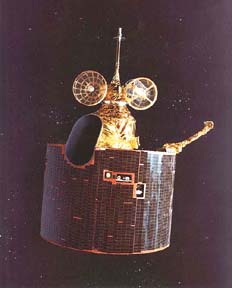|
(Files in red–history) |
Starting in 1942, Geiger counters and other detectors, set up to monitor cosmic rays, have occasionally seen sudden increases in the intensity of the radiation, associated with outbursts on the Sun, mostly with visible flares. The cosmic ray intensity returns to normal within minutes or hours, as the acceleration process ends and as accelerated ions disperse throughout interplanetary space. On the scale of cosmic radiation, solar-produced ions have relatively low energies, generally below 1 Gev (=billion electron volts) and rarely above 10 Gev. That is why such events are often missed by cosmic ray detectors near the equator, where the lowest energies are excluded by the Earth's magnetic field. The best detectors for observing solar particles are therefore those sensitive to the lowest energies of the cosmic radiation. In many events the Sun emits enormous numbers of lower-energy ions, with no more than tens of Mev (=millions electron volts). The Earth's magnetic field diverts them to the vicinity of the magnetic poles, where they may temporarily smother the ionosphere and interfere with radio communications. Such "polar cap blackouts" used to bother US military radar installations which scanned the polar cap for hostile missiles.
|

 Flare seen in X-rays by Yohkoh.
Flare seen in X-rays by Yohkoh.